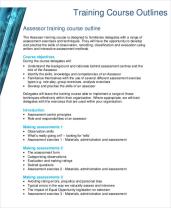How to support children with apraxia of speech?
Supporting children with apraxia of speech requires patience, creativity, and consistency. Here are some tips and strategies:
Speech Therapy: Enroll the child in regular speech therapy sessions with a speech-language pathologist (SLP) who has experience in treating apraxia. Consistency is key, so attend sessions regularly.
Individualized Treatment Plan: Work with the SLP to create an individualized treatment plan that addresses the specific needs and challenges of the child. The plan should be tailored to the child's strengths and weaknesses.
Repetition and Practice: Children with apraxia benefit from frequent and consistent practice. Encourage repetition of sounds, words, and phrases to help improve motor planning and coordination.
Use Visual Aids: Visual aids, such as pictures, diagrams, or charts, can help children with apraxia understand and remember specific sounds or words. Visual support reinforces verbal instruction.
Multisensory Approaches: Engage multiple senses during learning. For example, incorporate tactile activities, like playing with clay or sand, to enhance the child's understanding and production of sounds.
Motor Planning Activities: Include activities that focus on motor planning and coordination, such as blowing bubbles, playing musical instruments, or using oral motor exercises recommended by the SLP.
Simplify Instructions: Break down complex instructions into simpler, manageable steps. This helps the child understand and follow directions more easily.
Provide Positive Reinforcement: Offer praise and positive reinforcement when the child attempts to communicate, even if the attempt is not perfect. Positive feedback builds confidence and motivation.
Use Technology: Explore speech therapy apps or online resources designed to support children with apraxia. Some apps provide interactive activities and games that can make learning more enjoyable.
Home Practice: Encourage parents to practice speech exercises at home to reinforce what the child learns in therapy. Consistent practice in various settings helps generalize skills.
Promote Social Interaction: Create opportunities for the child to practice speech in social settings. This can include playdates, group activities, or joining clubs where they can interact with peers.
Remember, progress may be gradual, and each child is unique. Celebrate small victories and remain patient throughout the journey.
Supporting Children with Apraxia of Speech: A Comprehensive Guide
What is Apraxia of Speech?
Childhood apraxia of speech (CAS) is a motor speech disorder that makes it difficult for children to plan and coordinate the muscle movements needed to produce speech sounds. Children with CAS may have difficulty articulating words, producing consistent speech sounds, and speaking in a fluent manner.
Signs of Apraxia of Speech
While every child with CAS presents with unique challenges, some common signs may include:
- Difficulty producing specific sounds or words
- Inconsistent speech patterns (e.g., saying the same word differently each time)
- Slow or labored speech
- Pausing frequently while speaking
- Difficulty imitating sounds or words
- Difficulty transitioning between sounds
Strategies and Interventions for Parents and Educators
Supporting children with CAS requires a collaborative effort between parents, educators, and speech-language pathologists (SLPs). Here are some strategies and interventions that can be implemented at home and in the classroom:
1. Seek Early Evaluation and Diagnosis
Early intervention is crucial for children with CAS. If you suspect your child may have CAS, it is important to seek evaluation from a qualified SLP. Early diagnosis and intervention can significantly improve a child's speech development.
2. Work with a Speech-Language Pathologist (SLP)
SLPs are the primary professionals who provide treatment for CAS. They will assess your child's individual needs and develop a personalized treatment plan. SLPs may use a variety of techniques to help children with CAS, including:
- Articulation therapy: Focuses on teaching children how to produce specific sounds correctly.
- Oral-motor exercises: Strengthen and coordinate the muscles involved in speech production.
- Augmentative and alternative communication (AAC) methods: Provide children with alternative ways to communicate, such as using picture boards or speech-generating devices.
3. Practice at Home
Regular practice is essential for children with CAS to make progress. SLPs will provide home practice activities that parents can incorporate into their daily routines. Make practice sessions fun and engaging to keep your child motivated.
4. Use Visual Cues
Visual cues, such as pictures, mirrors, or gestures, can help children with CAS visualize the correct mouth and tongue positions for speech sounds.
5. Break Down Tasks into Smaller Steps
Complex speech tasks can be overwhelming for children with CAS. Break down tasks into smaller, more manageable steps to make them less daunting.
6. Provide Positive Reinforcement
Celebrate your child's progress, no matter how small. Positive reinforcement can boost their confidence and encourage continued effort.
7. Be Patient and Understanding
Learning to speak with CAS takes time and consistent effort. Be patient with your child and understand that they may not progress at the same pace as their peers.
8. Communicate with Teachers and School Staff
Keep your child's teachers and school staff informed about their CAS and any specific accommodations they may need. Collaboration between home and school is essential for a child's success.
Tips for Fostering Effective Communication Development
In addition to specific speech interventions, there are general strategies that can promote effective communication development in children with CAS:
- Create a Language-Rich Environment
Expose your child to a variety of language experiences, such as reading aloud, singing songs, and engaging in conversations.
- Encourage Active Listening
Pay attention to your child's attempts to communicate, even if their speech is difficult to understand. Make eye contact, nod, and respond to their attempts to express themselves.
- Use Simple and Clear Language
When speaking to your child, use simple and clear language that is appropriate for their developmental level. Avoid using too much jargon or complex sentence structures.
- Give Your Child Time to Process
Children with CAS may need more time to process what they hear and formulate their responses. Be patient and avoid interrupting them when they are trying to communicate.
- Use Visual Supports
Visual aids, such as pictures, gestures, or written words, can supplement verbal communication and make interactions more effective.
- Explore Alternative Communication Methods
If your child's verbal speech is severely limited, explore alternative communication methods, such as sign language, picture boards, or speech-generating devices.
Remember, every child with CAS is unique and will progress at their own pace. With patience, support, and appropriate intervention, children with CAS can develop effective communication skills and reach their full potential.











